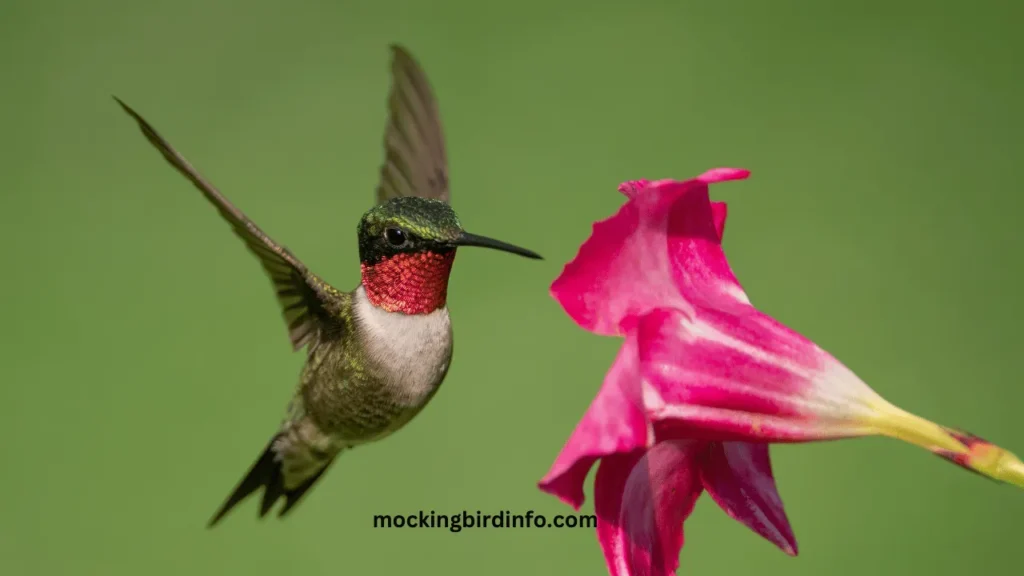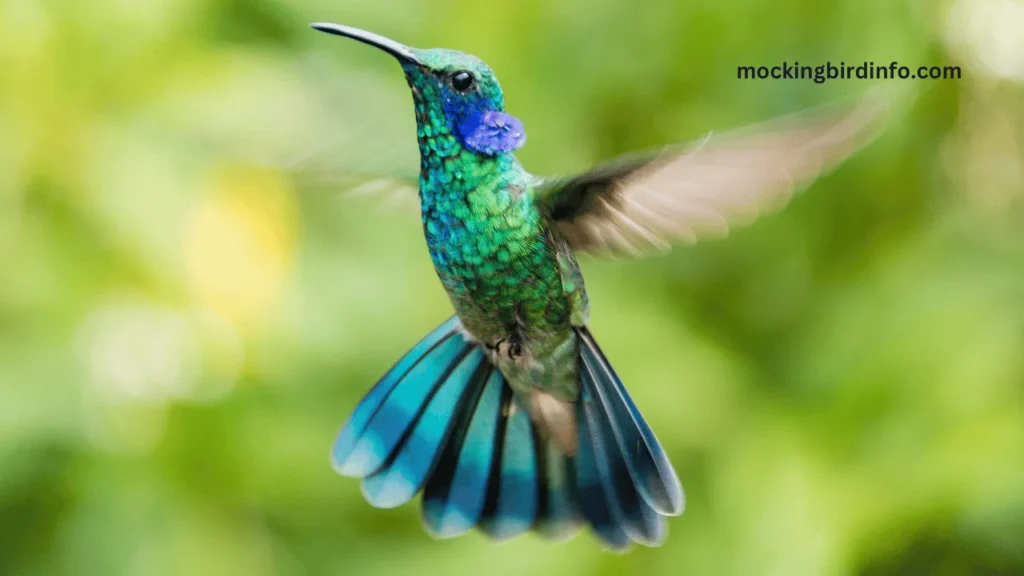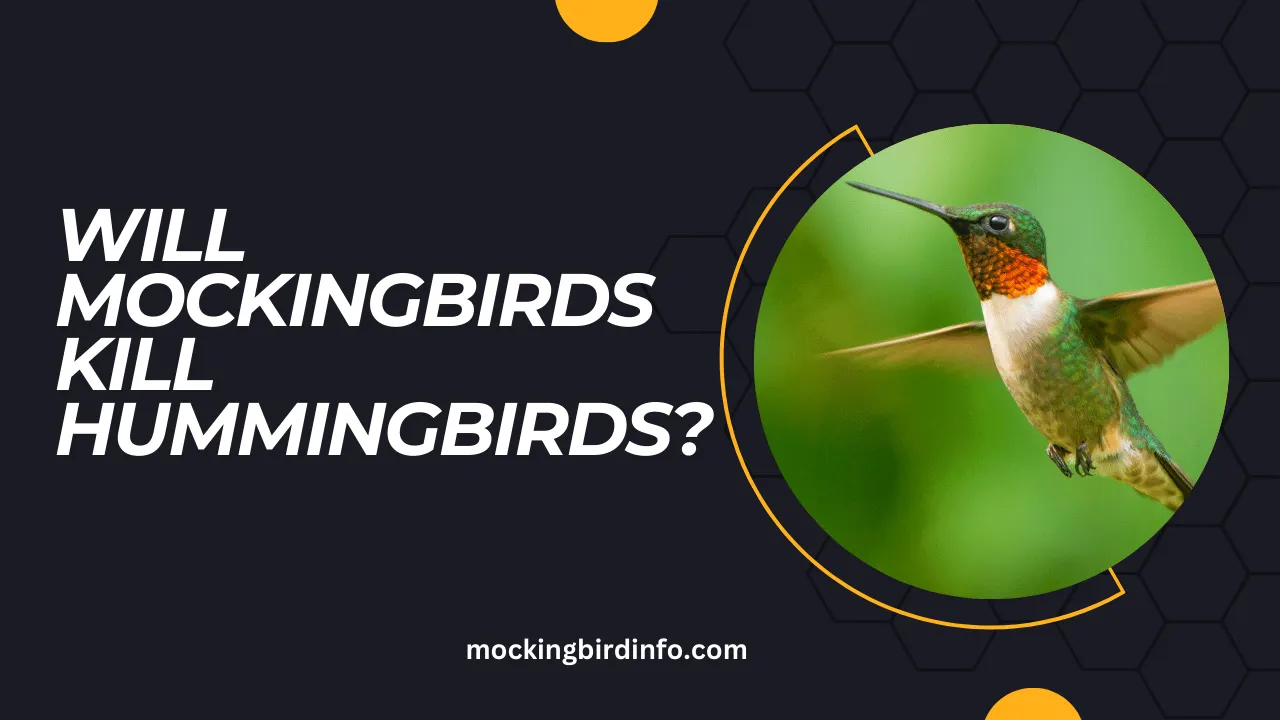Have you ever noticed a mockingbird and hummingbird sharing the same space and wondered if their interaction could turn hostile?
Mockingbirds, with their bold territorial instincts, often command attention, while hummingbirds, though tiny, are known for their speed and agility.
These two vastly different birds may occasionally clash, leading to questions about their coexistence and whether one could endanger the other.
The truth is that while mockingbirds are not known to intentionally kill hummingbirds, their territorial behavior can sometimes lead to conflicts.
These birds defend their nesting sites and food sources fiercely, and hummingbirds, who often rely on the same nectar-rich flowers or feeders, can inadvertently become targets.
Understanding the dynamics between these two species is essential for bird enthusiasts and homeowners who wish to promote harmony in their backyards.
In this article, we’ll explore the complex relationship between mockingbirds and hummingbirds, examining the factors that influence their interactions, the potential for conflict, and how human activities impact their coexistence.
By the end, you’ll have a deeper appreciation for these remarkable birds and practical tips for fostering a peaceful environment for both species.

Contents
- 1 Factors Influencing Interactions
- 2 Potential for Conflict
- 3 Impact of Human Activities
- 4 Minimizing Conflict
- 5 Promoting Understanding Through Observation
- 6 Conclusion
- 7 FAQs
- 7.1 1. Do mockingbirds actively hunt hummingbirds?
- 7.2 2. Why do mockingbirds chase hummingbirds?
- 7.3 3. Can mockingbirds harm hummingbirds?
- 7.4 4. Do hummingbirds fight back against mockingbirds?
- 7.5 5. How can I prevent conflicts between mockingbirds and hummingbirds?
- 7.6 6. Do mockingbirds eat hummingbird eggs or chicks?
Factors Influencing Interactions
Mockingbirds and hummingbirds often share overlapping habitats, particularly in urban and suburban areas where food sources are plentiful.
Mockingbirds thrive in trees, shrubs, and open spaces, while hummingbirds are drawn to gardens with nectar-filled flowers. This proximity naturally increases the chances of interaction between the two species.
The availability of food resources plays a significant role in their interactions. Mockingbirds primarily feed on insects and fruit, but they will also guard nectar-rich flowers or feeders, which hummingbirds rely on for survival.
Limited resources can intensify competition, especially in areas where natural food sources are scarce. Both species exhibit territorial behavior, especially during the breeding season.
Mockingbirds aggressively defend their nests and surrounding areas, often chasing away birds much smaller than themselves.
Hummingbirds, though tiny, are no strangers to territorial disputes, frequently engaging in aerial chases with other hummingbirds. These traits can sometimes lead to aggressive encounters between the two species.
Potential for Conflict
Direct confrontations between mockingbirds and hummingbirds are relatively uncommon but not unheard of. Mockingbirds may chase hummingbirds away from flowers or feeders in an effort to assert dominance.
These chases are typically non-lethal and result in the hummingbird retreating rather than engaging further. Indirect competition for resources can also create tension.
Hummingbirds require a constant supply of nectar to fuel their rapid metabolism, while mockingbirds may monopolize flower patches or feeders. This competition can leave hummingbirds with fewer feeding options, particularly in densely populated areas.
While mockingbirds do not actively prey on hummingbirds, they are known to occasionally prey on eggs or nestlings of smaller birds.
If a hummingbird nest is located within a mockingbird’s territory, there is a slight risk of predation, particularly if food resources are scarce. However, this behavior is not common and is more likely an act of opportunity rather than intent.

Impact of Human Activities
Human activities often exacerbate the interactions between mockingbirds and hummingbirds. For instance, bird feeders designed to attract hummingbirds may also appeal to mockingbirds, leading to increased competition.
Feeders placed in open, visible areas are more likely to become hotspots for disputes between the two species. Urbanization and habitat loss have forced both mockingbirds and hummingbirds to adapt to altered environments.
With fewer natural spaces, these birds are often confined to smaller territories, increasing the likelihood of conflict. Limited nesting sites and food resources can heighten tensions, particularly during breeding seasons.
Additionally, the introduction of non-native bird species can further complicate the dynamics between mockingbirds and hummingbirds.
Species like house sparrows may outcompete native birds for food and nesting sites, putting additional pressure on both mockingbirds and hummingbirds to defend their territories more aggressively.
Minimizing Conflict
Strategic placement of bird feeders can significantly reduce competition between mockingbirds and hummingbirds. Place hummingbird feeders in areas that are less accessible to larger birds, such as hanging them high or using feeders with smaller perches.
Separating nectar feeders from fruit or suet feeders can also minimize overlap in feeding zones. Creating a balanced habitat that supports both species is another effective strategy.
Plant a variety of native flowers that attract hummingbirds while providing trees and shrubs for mockingbirds to nest in. Ensuring an abundance of food sources helps reduce competition and promotes coexistence.
It’s important to understand that occasional disputes are a natural part of bird behavior. Minor disruptions, such as a mockingbird chasing away a hummingbird, do not typically pose a threat to hummingbird populations.
Observing and respecting these interactions can enhance your appreciation for the natural dynamics of birdlife.
Promoting Understanding Through Observation
Mockingbirds and hummingbirds are both fascinating creatures, each with unique behaviors and ecological roles. Watching their interactions provides insight into the complexity of bird behavior and highlights the importance of coexistence in shared environments.
By fostering an understanding of their needs and instincts, we can create a space where both species thrive. Encouraging coexistence means recognizing the value of biodiversity.
Mockingbirds play a crucial role in controlling insect populations, while hummingbirds are essential pollinators for countless plants. Protecting their habitats ensures a healthy ecosystem that benefits not just birds but all living creatures.
Conclusion
Mockingbirds and hummingbirds can share the same habitat with minimal conflict, though occasional territorial disputes may arise. While mockingbirds are unlikely to kill hummingbirds, their aggressive behavior can sometimes lead to resource competition or minor confrontations.
Understanding the factors influencing these interactions helps create an environment that supports both species.
To minimize conflicts, homeowners can adopt strategies like thoughtful feeder placement, habitat enhancement, and tolerating natural bird behaviors.
These steps not only benefit mockingbirds and hummingbirds but also contribute to a balanced ecosystem.
Ultimately, the coexistence of mockingbirds and hummingbirds reminds us of the intricate relationships in nature.
By promoting conservation and harmony, we can ensure these remarkable birds continue to thrive for generations to come.
FAQs
1. Do mockingbirds actively hunt hummingbirds?
No, mockingbirds do not actively hunt hummingbirds, but they may occasionally chase them away from food sources.
2. Why do mockingbirds chase hummingbirds?
Mockingbirds chase hummingbirds to defend their territory or food sources, such as nectar feeders.
3. Can mockingbirds harm hummingbirds?
While mockingbirds can chase or harass hummingbirds, direct harm is rare and usually unintentional.
4. Do hummingbirds fight back against mockingbirds?
Hummingbirds are unlikely to fight back against mockingbirds due to their size difference, opting instead to flee.
5. How can I prevent conflicts between mockingbirds and hummingbirds?
Use separate feeders for each species and space them apart to reduce competition.
6. Do mockingbirds eat hummingbird eggs or chicks?
Mockingbirds may occasionally prey on hummingbird eggs or nestlings, but this is uncommon.








